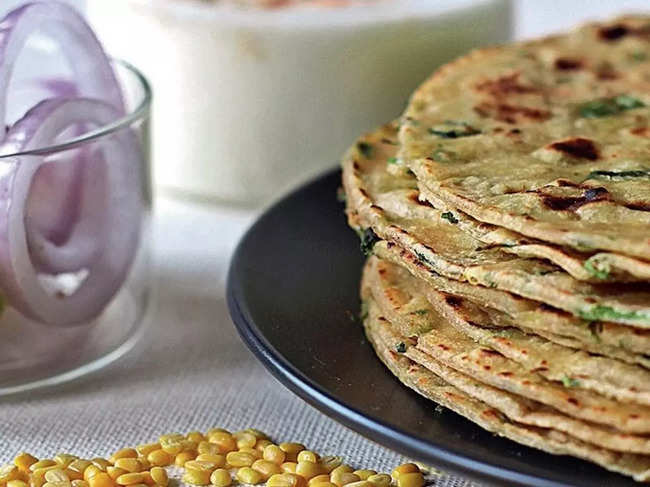 Getty Images
Getty ImagesAccording to Lenore Newman, in her book Speaking in Cod’s Tongues, which tries to identify what Canadian cuisine means, the breakthrough Indian-Canadian dish might be blueberry lassi. Newman argues that Canada’s cuisine is a creole, like a language formed by blending different ones. It is “a recipe from elsewhere reimagined with Canadian ingredients or a Canadian recipe reimagined with ingredients from elsewhere”.
Blueberry lassi is an example of the former — 100 million pounds of blueberries are grown in the Fraser River basin near Vancouver, where Newman samples the lassi. Butter chicken poutine is an example of the latter, where the iconic Quebec dish of French fries mixed with fresh cheese curds is reimagined with the mild Indian curry substituting the cheese.
It seems natural that Canadians would claim two Indian dishes, one nominally from a French-speaking part of the country. Any survey of Canada must deal with its divided history between French and English cultures. But Newman suggests that more than the divide, the constant tussle has prevented development of a single assertive national identity. And while this can be seen as a problem — Canada’s famous blandness — it could also be an opportunity to create a new kind of identity, driven by all the streams of immigration to the country.
Newman argues persuasively for how this is happening with dishes like perogies (dumplings from Poland or Ukraine) filled with berries, Italian ossobuco stew made with elk or sushi made with smoked salmon and other seafood from the Pacific
northwest. As with any trend, there can be problems at the extremes – and rather like how some types of immigration from India are causing strains in our relations with Canada, one has to wonder about the country’s extreme fondness for butter chicken. In Canada, you can now get butter chicken flavoured waffles, pies, perogies, lasagna, rotis and probably much more.
The rotis, which are popular in Toronto, hint at the complexities of immigration. They aren’t directly desi in origin but come from countries like Trinidad. There is a long history of migration from British Caribbean colonies to the largest part of the British Empire (now Commonwealth) in the Americas. As a result, Canada is one place where ‘East Indian’ is commonly used for people from the subcontinent, as a distinction from West Indians. The rotis are usually the hefty dal-filled ones typical of Trinidad, which derive from desi dal parathas.
These also bring an older Canadian connection. When the British took Indian indentured labour to work in Caribbean sugar plantations, they needed a substitute for the protein-packed dals that Indians ate, which weren’t grown in the Americas. Canadian farmers often planted yellow peas as a rotational crop with wheat, because the nitrogen-fixing roots of peas naturally improved soil fertility. Yellow peas were used as cattle fodder, but colonial officials realised they could be used like Indian dals. Most Caribbean Indian recipes now only use yellow peas.
A few decades back as India struggled with pulse shortages, it was realised that Canadian yellow peas could help. Imports took off, to the point where we consume them without realising, in restaurant sambhar or snacks made with besan. Pulses boosted Indo-Canadian relations, though in recent years we have found other sources, like Australia and Burma, while Canadian growers have found other markets, like the vegan products which use yellow pea protein. But the trade still matters for both countries and when things improve, it may be due to some dal diplomacy cooked up behind the scenes.








 Get Unlimited Access to The Economic Times
Get Unlimited Access to The Economic Times

